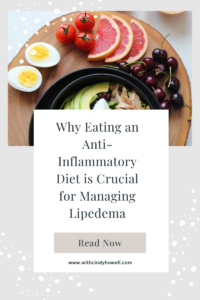In a world where diet fads and health trends come and go, primal nutrition stands as a foundational principle, rooted in our ancient dietary habits. This comprehensive guide will illuminate the essence of primal nutrition, why it’s more than just another food regimen, and how it can be a cornerstone of your health and wellness journey.
The CORE of Primal Nutrition
At its heart, primal nutrition is a nutritional strategy that models the diets of our predecessors from the Paleolithic era, before the advent of agriculture and modern conveniences. It’s designed to reflect the kind of food evolution has ‘allowed’ the human body to properly and efficiently process. The emphasis is not just on the food itself, but also on the lifestyle and physical activities that accompanied those diets.
Why Primal Nutrition?
The primal philosophy suggests that our bodies are genetically adapted to the kinds of foods that were available to our ancestors: meats, fish, fruits, vegetables, nuts, and seeds. The shift to farming and processed foods has been relatively recent, and some argue it has outpaced human evolution, leading to various health problems. By returning to a primal diet, advocates believe we can optimize our health and function.
The Primal Eating Pattern
A primal diet is more than just a list of foods; it’s a pattern of eating that encourages whole foods and discourages processed items. Here are the core principles:
1. Emphasizing Whole Foods
The primal diet focuses on consuming food in their most natural state, free from additives and processing. This includes an array of meats, including organ meats, and fresh fruits and vegetables, which provide a robust assortment of nutrients that can fuel and heal the body.
2. Eliminating Processed Foods and Sugar
Processed foods are typically high in unhealthy fats, sugar, and salt, which can lead to inflammation, weight gain, and a multitude of health issues. Primal nutrition advocates for eliminating or significantly reducing these foods from your diet.
3. Prioritizing Protein and Healthy Fats
Protein is essential for the body to repair and generate new cells, while healthy fats, like those found in avocados and olive oil, are beneficial for heart health. Primal nutrition stresses the importance of these macronutrients for a balanced diet.
4. Incorporating Fruits and Vegetables
Fruits and vegetables are rich sources of vitamins, minerals, and fiber. They can help prevent numerous lifestyle diseases and offer numerous health benefits including regulating digestion and providing antioxidants.
The Primal Nutrition Payoff
Adopting a primal diet can lead to a plethora of health benefits. While individual results may vary, many people find that a primal diet contributes to:
Improved Energy Levels
By providing your body with nutrient-dense foods free of artificial sugars and additives, a primal diet can offer sustained energy levels without the crashes associated with processed foods and sugar.
Weight Management
Due to its emphasis on whole foods and high nutrient density, many individuals experience more effective weight management with a primal diet. The focus on protein and healthy fats can also help control appetite.
Enhanced Mental Clarity
The removal of processed foods and sugar can lead to clearer thinking and improved cognitive function. Many people find that adopting a primal diet can help them focus better and feel more alert.
Better Digestion and Gut Health
A diet high in fiber and low in anti-nutrients can promote healthy digestion and nourish the beneficial microbes in your gut, which is essential for a strong immune system and overall health.
Embarking on Your Primal Nutrition Journey
Adopting a new diet can be challenging, so it’s important to have a plan. Here’s how you can start your primal nutrition journey:
Tips for Transitioning to a Primal Diet
Start gradually by making small changes to your diet, such as replacing a processed snack with a piece of fruit or a handful of nuts. Educate yourself about the foods that are allowed on a primal diet and look for recipes that you enjoy.
Meal Planning and Recipes
Creating meal plans can help you stay on track with your new diet. Look for recipes that use whole food ingredients and experiment with different ways of preparing your meals to keep them interesting and varied.
Overcoming Common Challenges
It’s common to experience cravings and feel limited by the foods you can’t eat on a primal diet. Finding healthy substitutes for your favorite foods and reminding yourself of the benefits of your new diet can help you stay motivated.
Primal Nutrition for Women
Women have unique nutritional requirements, especially at different stages of their lives. Here’s how primal nutrition can cater to those needs:
Specific Considerations for Women’s Health
A primal diet can offer health benefits for women, such as supporting bone health through the consumption of nutrient-dense foods and hormonal balance through the intake of healthy fats.
Hormonal Balance and Primal Eating
The healthy fats and balanced nutrition of a primal diet can support hormonal balance, which is essential for fertility and overall well-being.
The Time to Go Primal is Now
Primal nutrition isn’t just a diet; it’s a lifestyle that can revolutionize the way you look at food and its role in your health. By returning to the basics of what we ate long ago, we may find a path to wellness that is as old as humanity itself.
As you contemplate your health goals and the potential of primal nutrition, remember that every journey begins with a single step. Whether that’s swapping one meal a day for a primal alternative or diving in headfirst, the important thing is to start. The benefits of embracing primal nutrition can be vast and far-reaching, affecting not just your waistline but your overall vitality and longevity.
It’s time to discover the powerful synergy between the food you eat and the way you feel. The primal journey is an invitation to reconnect with our natural state, one bite at a time.
OX Cindy







